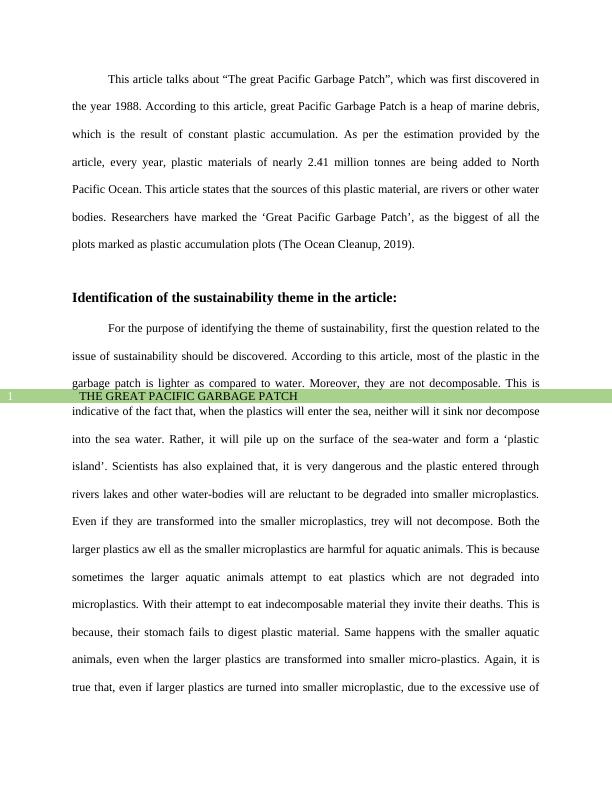The Great Pacific Garbage Patch and its Impact on Sustainability
Analyzing an article on the Great Pacific Garbage Patch and its connection to sustainability.
7 Pages1589 Words148 Views
Added on 2022-11-23
About This Document
This article talks about “The great Pacific Garbage Patch”, which was first discovered in the year 1988. According to this article, great Pacific Garbage Patch is a heap of marine debris, which is the result of constant plastic accumulation. The article highlights the impact of plastic accumulation on sustainability and the need for urgent action to prevent environmental degradation. It also discusses the connection between plastic accumulation in the ocean and the extinction of aquatic life, wild life, and human life.
The Great Pacific Garbage Patch and its Impact on Sustainability
Analyzing an article on the Great Pacific Garbage Patch and its connection to sustainability.
Added on 2022-11-23
ShareRelated Documents
End of preview
Want to access all the pages? Upload your documents or become a member.



